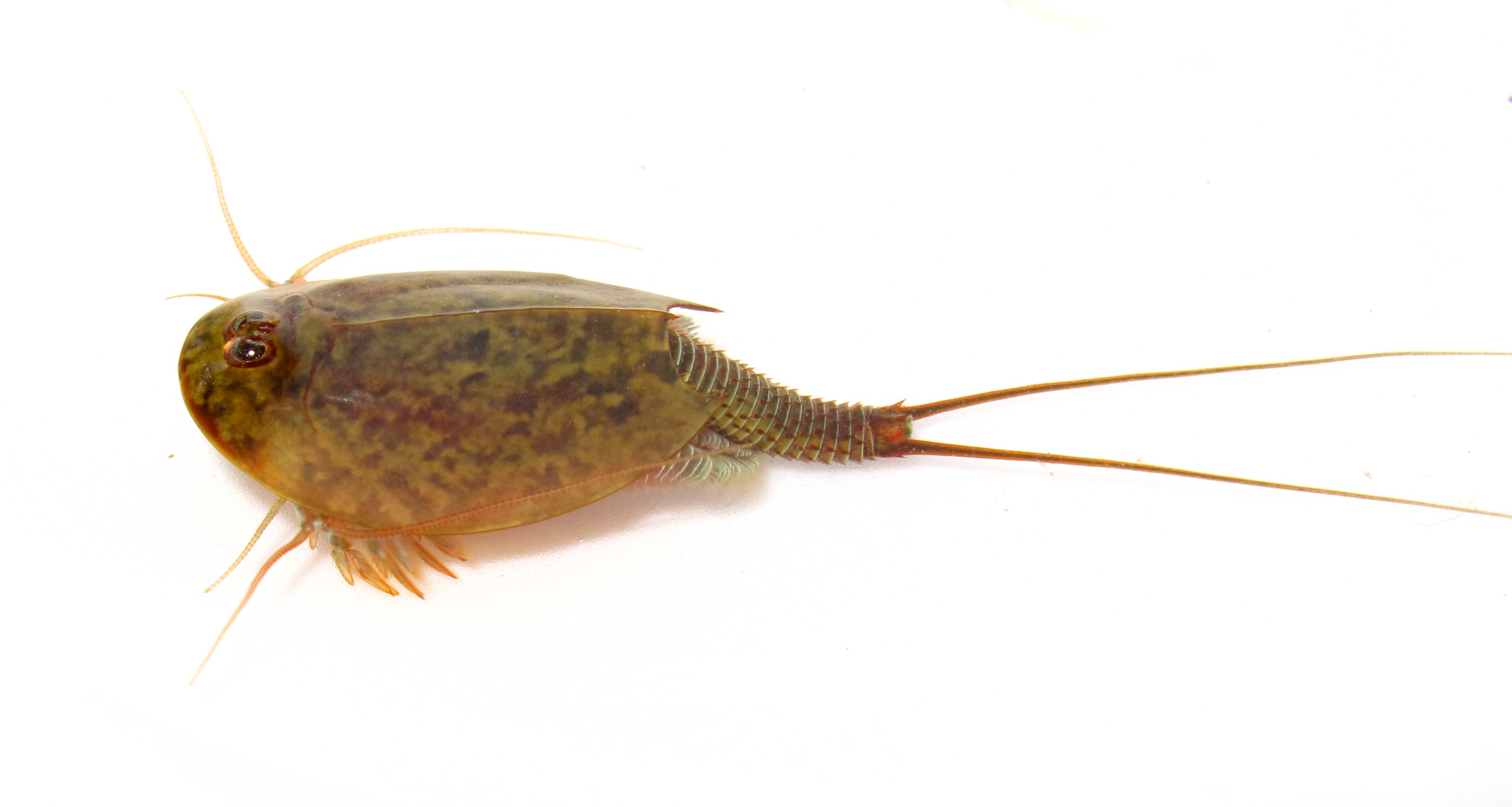Ancient Tadpole Shrimp Not a Living Fossil, Study Says

Tadpole shrimp aren't the living fossils they appear to be, new research suggests.
Darwin coined the term "living fossil" in "On the Origin of Species" to describe organisms that appear not to have evolved much over millions of years. The coelacanth, the horseshoe crab and the ginkgo tree have all been called living fossils. Some scientists reject the term, because it implies that evolution has ground to a halt for these organisms.
The tadpole shrimp Triops cancriformis are commonly considered living fossils, but a study published today (April 2) in the journal PeerJ shows today's creatures are much younger than their ancient look-alikes.
Tadpole shrimp are ancient crustaceans ― a group that includes the Triops genus commonly sold as eggs that can be grown as pets, similar to so-called Sea-Monkeys. They are often referred to as living fossils because they closely resemble fossils that predate the dinosaurs.
In the study, researchers analyzed the DNA sequences of all known tadpole shrimp, as well as the DNA sequences of related crustacean groups, like water fleas and brine shrimp. The analysis showed tadpole shrimp have undergone several cycles of widespread evolution and extinction.
Tadpole shrimps are known as a cryptic species because members of different species look similar to each other but differ in their DNA sequences. The study revealed a total of 38 species, and many of these have not yet been described. Because they all look alike, assigning fossils to the correct species is a challenge. Some 250-million-year-old fossils were assigned to the living Triops cancriformis species, but the new research suggests this species actually evolved much more recently ― less than 25 million years ago. [Album: 25 Amazing Ancient Beasts]
Because little is known about the evolution of cryptic species like the tadpole shrimp, the term "living fossil" can be misleading, the authors of the study said.
Sign up for the Live Science daily newsletter now
Get the world’s most fascinating discoveries delivered straight to your inbox.
"Living fossils evolve like any other organism ― they just happen to have a good body plan that has survived the test of time," lead author Africa Gómez said in a statement.
Gómez likened living fossils to classic car models like the Mini, which resembles old designs but has more modern features like electronic windows and GPS. Similarly, tadpole shrimp look like their ancestors, but have a few subtle differences.
"Although outwardly they look very similar to tadpole shrimp fossils from the age of the dinosaurs, their DNA and reproductive strategies are relatively hidden features that are constantly evolving," Gómez said.
Follow Tanya Lewis on Twitter and Google+. Follow us @livescience, Facebook & Google+. Original article on Live Science.










